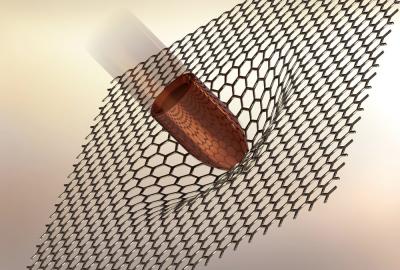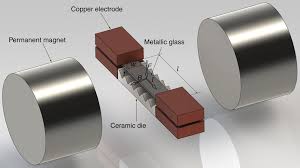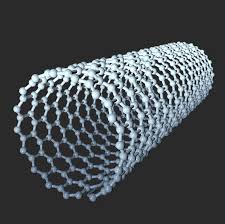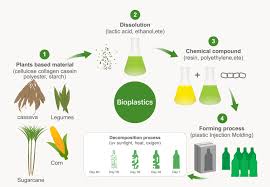INTRODUCTION:

Throughout human history, materials have played a key role in shaping our lives. In ancient times, when humans lived in forests, they hunted animals with their bare hands. But with the discovery of stone tools, hunting became easier and survival more secure. As time progressed, we learned to extract metals from ores, forging weapons and tools that built great empires and changed the course of history.
Now, as we step into a more advanced era, the demand for futuristic materials is growing. Scientists are developing substances that feel like something out of science fiction—fabrics stronger than steel, metals lighter than plastic, and materials that can even heal themselves. These groundbreaking innovations have the potential to transform technology, medicine, space exploration, and even our daily lives in ways that are almost unimaginable today.
These futuristic materials not only enhance our daily lives but also play a vital role in various industries. From construction to electronics, the versatility of futuristic materials is unmatched.
“Now, let’s explore seven futuristic materials that scientists and engineers are developing through their cutting-edge research.”
GRAPHENE:

Graphene is also called the wonder material of this century, because it is made up of a single layer of carbon atoms arranged in a hexagonal honeycomb structure, and it is only one atom thick. Graphene is extremely strong and light, and highly conductive.
KEY PROPERTIES OF GRAPHENE:
- Strength: It is 200 times stronger than steel, yet it is incredibly lightweight.
- Thickness: It is just one atom thick, which makes it the thinnest material ever discovered.
- Conductivity: It is an excellent conductor of electricity and heat, surpassing copper.
- Flexibility: It is transparent, flexible, and still durable.
Potential Applications:
- Electronics: It can be used to create ultra-fast processors, flexible touchscreens, and transparent electronic devices.
- Energy Storage: Graphene is used to make supercapacitors and advanced batteries that can charge themselves within a few seconds.
- Medical Use: It can be used in medical fields, like in medical drug delivery systems, in biosensors, and even to make artificial tissues.
- Water filtration: Graphene membranes are used to filter salt and impurities from water and provide clean drinking water.
- Aerospace & Automotive: Graphene is an extremely strong, lightweight composite for making fuel-efficient vehicles and aircraft.
SELF-HEALING CONCRETE:

Concrete is a cornerstone of modern civilization, widely used in buildings, bridges, roads, and dams. However, over time, cracks inevitably form due to factors like weather, pressure, and aging. These cracks allow water to seep in, weakening the structure and driving up repair costs. To address this challenge, scientists have developed self-healing concrete—a futuristic material capable of repairing itself without human intervention.
How It Works:
Here are two ways to build self-healing concrete:
- Bacteria-Based Healing: In bacteria-based healing, Special bacteria are mixed into the concrete. When cracks form, water dips into the concrete, the bacteria become active and produce limestone, which fixes the cracks naturally.
- Chemical Healing: some versions use microcapsules filled with healing agents (like polymers). When cracks form in the capsules automatically break and release the material and fill the gaps.
Key Benefits:
- Longer Lifespan: Self-healing concretes extend the durability of buildings and infrastructure.
- Cost-Effective: It reduces the need for frequent maintenance and repairs because it automatically repair itself.
- Eco-Friendly: By using self-healing concrete, it decreases the demand for cement, which cuts down the carbon emissions.
Potential Applications:
- Highways and Bridges – it use to build Longer-lasting roads and bridges with minimal repair costs by repair automatically.
- Tunnels and Dams –it used to build Safer water infrastructure which resistant to leaks.
- Buildings in Extreme Environments – This type of concrete is especially effective in regions prone to earthquakes, floods, or heavy infrastructure use, making it a smart solution for long-lasting structures
AEROGEL:
Self-healing concrete is just one of many futuristic materials that can revolutionize construction practices. As engineers explore the potential of these futuristic materials, the future looks promising.

Aerogel, often called “frozen smoke” or “solid air,” is one of the lightest and most extraordinary materials ever created by scientists. It is a synthetic porous substance formed by removing the liquid from a gel and replacing it with gas, resulting in a structure that is about 99.8% air. This unique composition makes aerogel extremely lightweight while also giving it some of the most remarkable insulating properties known to science.
Key Properties of Aerogel:
- Ultra-Lightweight: Aerogel is so light that it can rest on the flower without crushing it.
- Excellent Insulator: Aerogel is one of the best thermal insulators that has ever been discovered; it is able to protect against extreme heat and cold.
- High Surface Area: Aerogel has a high surface area. Just 1 gram of aerogel can have a surface area larger than a football field.
Potential Applications:
- Space Exploration – Aerogel can be used by space agencies to capture cosmic dust particles and insulate spacecraft.
- Construction – Aerogel can be used to make energy-efficient buildings with Super-insulating windows, walls, and roofs.
- Clothing – Aerogel can be used to make Lightweight jackets and boots that can protect us from extreme cold.
- Electronics – Aerogel can be used in a device for Heat management, which helps to increase its performance.
METALLIC GLASS:

Metallic glass, also known as amorphous metal, is a truly futuristic material that combines the strength of metal with the flexibility of glass. Unlike ordinary metals, which have a well-ordered crystalline structure, metallic glass has a random atomic arrangement similar to that of glass. This unique structure gives it extraordinary properties that conventional metals cannot match.
Key Properties of Metallic Glass:
- Extreme Strength: It is Stronger than steel and highly resistant to wear.
- Elasticity: it Can bend slightly without breaking and it is different from other brittle glass.
- Corrosion Resistance: It is more durable than regular metals because it doesn’t cause corrosion.
- Magnetic Properties: these glasses show magnetic behavior, which is why it very useful in electronics.
- Smooth Surface: Its structure is non-scratchy, which makes it very smooth and resistant to scratches.
Potential Applications:
- Electronics– It can be used in transformer cores for efficient transfer of energy with low energy loss.
- Medical Devices– It can be used in the making of surgical tools because it is biocompatible and has corrosion resistance.
- Consumer Products– metallic glass is used to make mobile cases and watch frames due to its scratch-resistant ability.
- Aerospace and Military– It can be used to make strong and lightweight components that can withstand harsh conditions.
CARBON NANOTUBES:

Carbon nanotubes (CNTs), also known as Bucky tubes, are cylindrical structures made of carbon atoms arranged in a hexagonal pattern. Their diameters range from just 1 to 10 nanometers, making them incredibly small. However, what makes CNTs remarkable is not their size but their unmatched strength and versatility—qualities that have fascinated scientists worldwide. There are two main types of carbon nanotubes: single-walled carbon nanotubes (SWNTs) and multi-walled carbon nanotubes (MWNTs).
Key Properties of Carbon Nanotubes:
Aerogel’s unique properties make it a prime candidate among futuristic materials for innovative insulation solutions. This futuristic material is paving the way for energy-efficient designs.
- Unmatched Strength: They are around 100 times stronger than steel but six times lighter than steel.
- High Conductivity: Carbon nanotubes are Excellent conductors of both electricity and heat.
- Flexibility: it has high flexibility so it can bend without breaking it is different from other brittle materials.
- Nano-Scale Size: it is an ultra-small size, making it effective in making nanorobots and mini device parts.
Potential Applications:
- Electronics– it can use in to make nanoscale processors and transistors.
- Energy– it is lightweight and a good conductor, which helps to make efficient batteries and supercapacitors that charge faster.
- Medical Use– it can be used in a medical drug delivery system, in cancer detection, and in artificial muscles.
- Space Exploration-it can be a key component to make space elevators because of its strength
BIOPLASTICS:

Plastic has become an essential part of our daily lives, but it has also turned into one of the world’s biggest environmental problems. Once discarded, conventional plastics—being non-biodegradable—can take thousands of years to break down. To address this issue, scientists and engineers are developing bioplastics, a next-generation alternative made from renewable sources such as cornstarch, sugarcane, and algae. Unlike traditional plastics, which are derived from petroleum, bioplastics are designed to decompose naturally, helping to reduce pollution and environmental damage.
Key Properties of Bioplastics:
- Eco-Friendly: It is made from renewable plants like sugarcane and cornstarch instead of petroleum.
- Durability: In the future, it can be engineered to be as strong as conventional plastics.
- Reduced Carbon Footprint: it decreases the greenhouse gas carbon dioxide emitted by industries during production.
Potential Applications:
- Packaging– It can be used to make bags, bottles, and biodegradable food containers.
- Consumer Products– it is used to make eco-friendly culture, straw, and toys for children.
- Electronics– it is used to make sustainable casing and components for gadgets.
- Agriculture– this biodegradable waste can be used in farms as manure.
PROGRAMMABLE MATTER:

In many science fiction movies, we see futuristic materials that can change shape on demand—for example, transforming from a sheet of paper into a chair, a pencil, or even a cup. While this once seemed purely imaginary, scientists are now developing programmable matter, a revolutionary material that can alter its shape in real life. Programmable matter is made up of tiny units called claytronic atoms (or catoms), which can rearrange themselves in response to external instructions such as electrical signals, magnetic fields, or computer commands.
Metallic glass stands out as a remarkable futuristic material that combines strength and flexibility. The emergence of this futuristic material could reshape industries ranging from electronics to aerospace.
Key Properties of Programmable Matter:
- Shape-Shifting: it can change form into almost anything that is programmed into it.
- Adaptability: it can adjust its physical properties (hardness, texture, color) on demand of the situation.
- Smart Control: it is controlled and operated through advanced software and algorithms.
Potential Applications:
- Medical Field– it can be used to make a surgical tool that can change its shape in the body according to the shape.
- Consumer Electronics– it is used to make devices that can shape phones, laptops, and tablets according to the needs of consumers.
- Military & Defense– it is used in the military by making camouflage material that can adjust the color and shape according to need.
- Entertainment– it can be used to make holograms for physical objects for gaming or movies
INTERNAL LINKS:
CLICK HERE TO KNOW ABOUT NANOROBOTS IN MEDICINE:
https://techman.live/the-future-of-healthcare-nanorobots-is-revolutionary/
CLICK HERE TO KNOW ABOUT MICROSOFT’S MAJORANA1:
https://techman.live/microsoft-made-majorana1-chip-and-its-a-revolutionary/
EXTERNAL LINKS:
CLICK HERE TO KNOW MORE ABOUT FUTURISTIC MATERIALS:
https://www.cuubstudio.com/blog/10-future-materials-that-can-change-the-way-we-build
https://www.ube.ac.uk/whats-happening/articles/future-building-materials/
